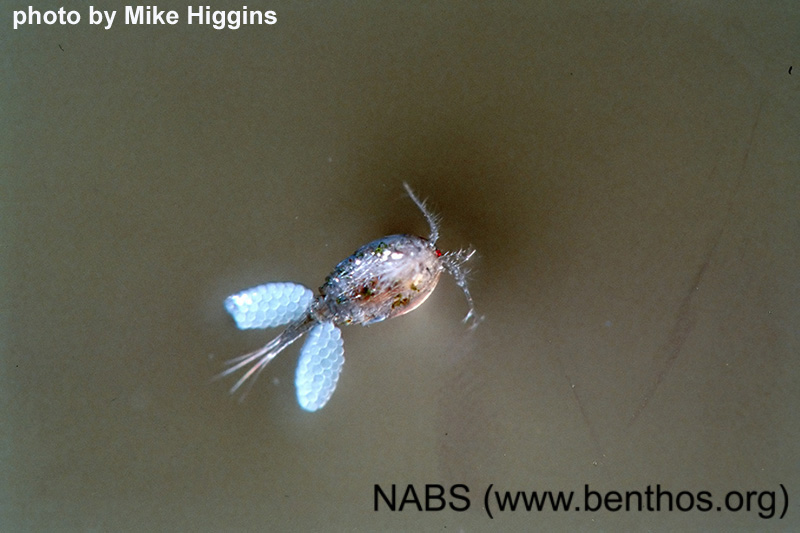
THE XERCES SOCIETY FOR INVERTEBRATE CONSERVATION Aquatic Invertebrates in Pacific Northwest Freshwater Wetlands |
| Identify taxa |
Copepoda (copepods) |
Copepods can be found in most all bodies of water. They are less common in fast flowing streams. There are three orders of copepods that you are likely to find in a wetland: Calanoida, Cyclopoida and Harpacticoida. The Harpacticoids are benthic, the Cylcopoids are semi-benthic, and the Calanoids use their very long antennae to flit around in the water column of still waters. The Calanoids may reach lengths of multiple millimeters. Crustacea.net is a great resource available for identifying many microcrustaceans, including copepods.Copepods are very tiny, so when they are found in samples it is usually because they are stuck to other material in the net. Copepods are important parts of aquatic ecosystems; they consume algae and other microorganisms and are predated on by fish and other invertebrates. Copepods can be fairly difficult to tell apart from one another, but their size, conspicuous and numerous legs, and their evident body segments help separate them from other groups. Their body is cylindrical, and they have one eye positioned centrally at their anterior end. The females often have a pair of egg sacs attached to either side of their abdomen. Their abdomen segments are sometimes modified into a tail. Three families of copepods that have been collected from Pacific Northwest wetlands include: Diaptomidae (order Calanoida), Cyclopidae (order Cyclopoida), and Canthocamptidae (order Harpacticoida). |
Size:
xsmall |
 |
|
© 2007 Xerces Society
Contact info@xerces.org

